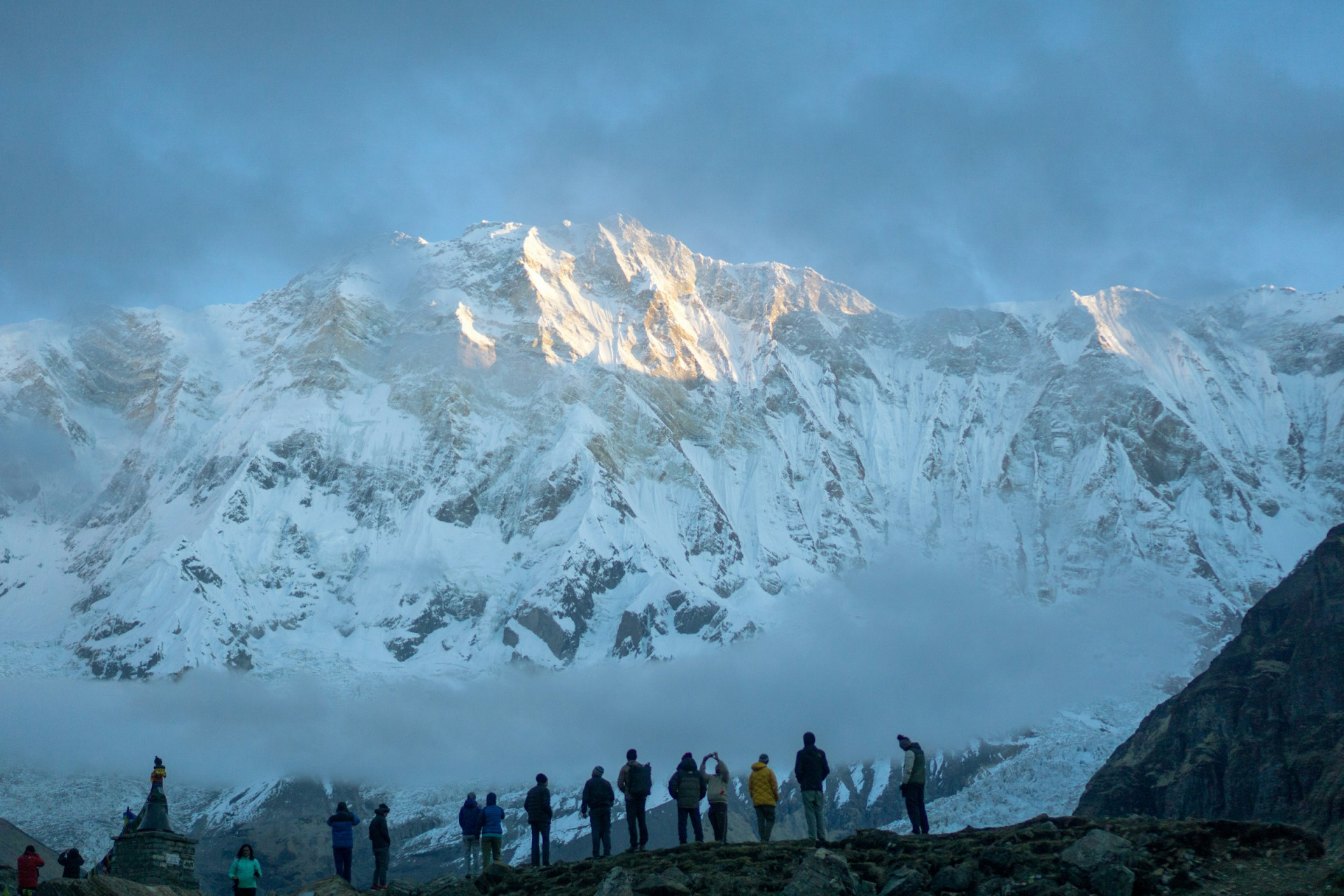Climbing Mt. Everest (8,848 meters) and Lobuche East (6,119 meters) in a single expedition is a challenging yet rewarding experience that combines the ultimate high-altitude mountaineering of Everest with the technical and scenic ascent of Lobuche East. Here are the key aspects of this combined climb:
Technical Difficulty
Everest: The standard route via the South Col involves traversing the Khumbu Icefall, the Lhotse Face, and the Hillary Step. Each section presents significant technical challenges, including navigating through crevasses, steep ice slopes, and exposed rock sections.
Lobuche East: The climb involves a mix of rock scrambling, snow, and ice climbing. The final summit ridge is particularly exposed and requires good technical skills and a head for heights.
High Altitude
Everest: At 8,848 meters, Everest is the highest peak in the world, requiring climbers to acclimatize carefully to avoid altitude sickness. The climb involves spending significant time in the "death zone" (above 8,000 meters), where the air is thin and oxygen levels are extremely low.
Lobuche East: At 6,119 meters, Lobuche East is significantly lower than Everest but still requires acclimatization. It serves as an excellent acclimatization peak and training climb before attempting Everest.
Physical and Mental Stamina
Combined Climb: Attempting both peaks in a single expedition is a test of endurance. Climbers must be in peak physical condition to handle the prolonged exposure to high altitude and the physical demands of continuous climbing. Mental fortitude is crucial to overcome fatigue, stress, and the psychological challenges posed by extreme environments.
Acclimatization Strategy:
Everest and Lobuche East: Proper acclimatization is critical for success. Climbers typically climb Lobuche East first to gain acclimatization experience before heading to Everest Base Camp. This rotation helps prepare the body for the higher altitudes of Everest.
Logistics and Support
Base Camp Setup: Establishing well-equipped base camps for both mountains is essential for managing supplies, rest, and communication. Climbers rely on Sherpas for logistical support, including setting up camps, carrying loads, and fixing ropes.
High Camps: Multiple high camps are established on both mountains. The setup of these camps is crucial for a successful summit push on Everest and Lobuche East.
Weather and Seasonal Window
Optimal Climbing Season: The best time for climbing Everest and Lobuche East is during the pre-monsoon (April to May) and post-monsoon (September to October) periods. Stable weather is crucial for summit attempts, but climbers must be prepared for sudden changes and extreme conditions.
Route and Climbing Schedule
Summit Push: For Lobuche East, the summit push typically involves an early start to reach the summit and descend safely within the same day. For Everest, the summit push starts from Camp IV on the South Col, with climbers aiming to reach the summit in the early morning hours to avoid afternoon storms.
Safety Considerations
Risks and Hazards: Both mountains pose significant risks, including avalanches, crevasses, icefall collapses, and extreme weather. Climbers must be vigilant and prepared to turn back if conditions become unsafe. Comprehensive risk management and adherence to safety protocols are essential.




